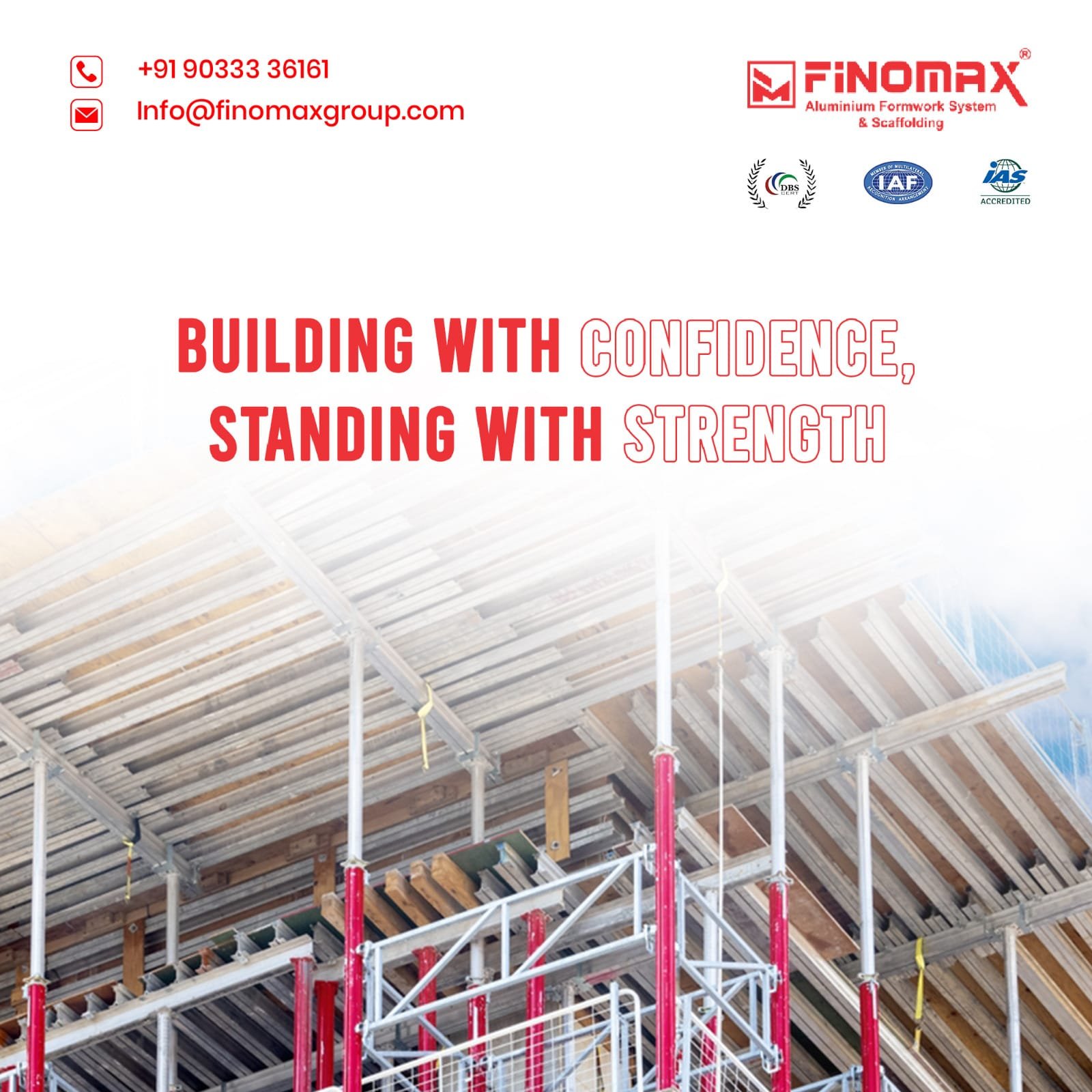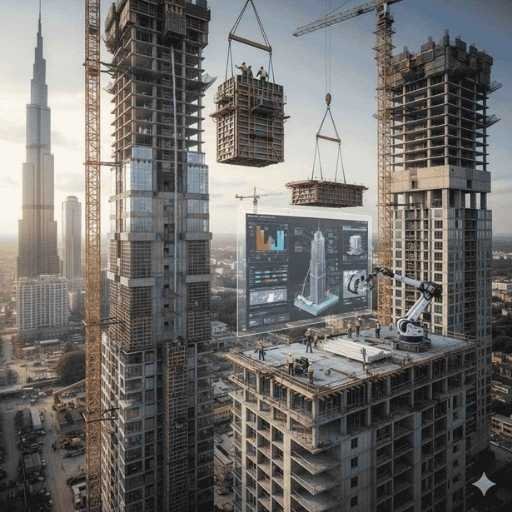In today’s fast-paced construction industry, builders and developers are under constant pressure to deliver high-quality projects faster, smarter, and more sustainably. Traditional construction methods, while proven, often come with challenges like delays, high labor costs, and inconsistent finishes.
Enter Monolithic Aluminium Formwork — a breakthrough innovation that’s transforming how modern structures are built. By combining precision engineering, sustainability, and unmatched efficiency, this advanced formwork system is redefining the future of construction.
If you’re looking for a way to speed up project timelines, cut costs, and achieve superior quality — this technology might be the solution you’ve been waiting for.
What Is Monolithic Aluminium Formwork?
Monolithic Aluminium Formwork is a modern construction system made of lightweight yet durable aluminium panels. These panels are designed to form walls, slabs, beams, and columns in a single continuous pour, eliminating joints and inconsistencies.
Unlike conventional formwork systems (timber, steel, or plywood), aluminium formwork allows the entire structural frame of a building to be cast as one monolithic unit. This process ensures better structural integrity, uniformity, and smoother finishes — all while reducing time and waste.
Key benefits at a glance:
- Single-step casting for walls, slabs, and columns
- High precision and dimensional accuracy
- Smooth concrete finish (minimal plastering required)
- Easy to handle, lightweight, and fully reusable
This innovative system is widely used in high-rise, residential, commercial, and mass housing projects across India, the Middle East, and other fast-developing regions.
1. Faster Construction with Greater Efficiency
Traditional construction involves multiple stages — setting up formwork, pouring concrete, curing, dismantling, and reassembling for each level or section. Each step consumes time, manpower, and resources.
Monolithic Aluminium Formwork streamlines this entire process. Since all structural elements are cast together, repetitive formwork activities are eliminated. The result?
Projects move faster, with construction speed increasing by up to 30–40% compared to traditional systems.
Why it’s more efficient:
- Modular and easy-to-install panels
- Reduced dependency on skilled labor
- Simultaneous work on multiple floors
- Lower error margin and consistent quality
This system is especially beneficial for large-scale and high-rise projects, where speed and precision directly impact profitability and delivery timelines.
2. Cost-Effective and Highly Reusable
While aluminium formwork requires a higher initial investment, it offers exceptional long-term cost savings. Each set of aluminium panels can be reused 200–300 times with minimal maintenance — far exceeding the lifespan of timber or steel formwork.
Cost advantages include:
- Reduced labor expenses due to quicker setup
- Shorter project durations (faster ROI)
- Minimal material wastage
- No need for extensive plastering or finishing
In short, it’s not just a cost-effective construction method, but a sustainable financial investment for developers looking to build at scale.
3. Enhancing Energy Efficiency and Green Building Design
One of the lesser-known advantages of Monolithic Aluminium Formwork is its contribution to energy-efficient and sustainable construction.
Its precision ensures uniform wall thickness and seamless joints, minimizing air leakage and improving insulation. The aluminium’s reflective properties also help regulate temperature, keeping interiors cooler — particularly valuable in warm climates like India, Dubai, and Saudi Arabia.
Green building benefits:
- Reduced energy consumption in HVAC systems
- Improved thermal performance of buildings
- Enhanced compliance with green certification standards (LEED, GRIHA, etc.)
By integrating aluminium formwork, developers can meet sustainability goals while lowering operational energy costs for occupants — a win-win for both builders and residents.
4. Eco-Friendly and Sustainable Construction Material
Sustainability isn’t just about operational efficiency — it starts with the materials used. Aluminium formwork is inherently eco-friendly, as it replaces timber, reduces waste, and is 100% recyclable.
Sustainability highlights:
- No deforestation (unlike timber-based systems)
- Minimal on-site waste and debris
- Long lifespan and recyclability
- Lower carbon footprint across the project lifecycle
Because of these factors, Monolithic Aluminium Formwork is becoming the preferred choice for developers committed to green construction and environmental responsibility.
5. Superior Structural Quality and Precision
Precision is at the core of aluminium formwork technology. Every panel is designed with exacting accuracy to ensure a perfect fit — resulting in consistent wall alignment, smooth concrete surfaces, and exceptional structural strength.
Quality advantages:
- Uniform wall thickness and alignment
- Reduced chances of leakage, cracking, or honeycombing
- High durability and load-bearing capacity
- Excellent surface finish (requires little to no plastering)
This precision translates directly to better aesthetics, lower maintenance costs, and enhanced durability of the final structure — qualities that buyers and investors value deeply.
6. Affordable and Scalable for Modern Housing
As governments and private developers push for affordable and mass housing, Monolithic Aluminium Formwork offers a scalable, sustainable solution.
Its speed, reusability, and minimal maintenance make it ideal for large housing projects where consistency and cost control are critical. Even for smaller developers, partnering with aluminium formwork suppliers or renting systems can significantly boost efficiency without heavy capital investment.
Why it’s ideal for affordable housing:
- Quick project turnaround times
- Long-term cost savings
- Uniform, high-quality finishes
- Sustainable and low-maintenance construction
By enabling faster project delivery and cost control, aluminium formwork supports the vision of “Housing for All” while promoting greener, smarter construction.
Key Takeaways: The Future of Smart Construction
Here’s why Monolithic Aluminium Formwork is transforming the global construction landscape:
- Speed: Faster construction cycles with fewer steps
- Cost Savings: High reuse value and minimal waste
- Sustainability: Eco-friendly, recyclable, and energy-efficient
- Quality: Superior finishes and stronger structures
- Scalability: Perfect for both high-rise and mass housing projects
It’s not just a building method — it’s a construction revolution that bridges the gap between affordability, sustainability, and efficiency.
Conclusion: Building the Future with Finomax Aluminium Formwork Systems
As the demand for faster, smarter, and greener construction grows, Finomax Aluminium Formwork Systems stands at the forefront of this transformation.
Our monolithic aluminium formwork solutions are engineered for precision, durability, and sustainability, empowering builders to deliver world-class results in record time. Whether you’re developing high-rise towers, affordable housing, or infrastructure projects — Finomax ensures efficiency, strength, and eco-friendly performance at every stage.
🌟 Build smarter. Build stronger. Build with Finomax.
Contact us today to discover how our Monolithic Aluminium Formwork Systems can transform your next construction project.






